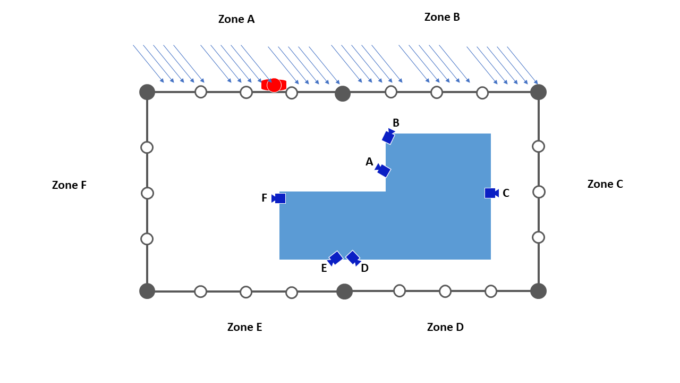Sensor Fusion Example #1
Our first example is an intrusion attempt happening during windy conditions. The intruder (red symbol) is attempting to scale the fence in zone A. Meanwhile, a brisk wind is shaking the entire North side of the fence, zone A and B.

How do the two systems react?
Boolean Logic
Zone B is only affected by wind and there’s no intruder in that stretch of fence. A Boolean system sees fence activity in zone B that isn’t paired with a person, so it suppresses any alarms for that zone. The system also sees fence motion along the entire length of zone A and since the fence and the camera are active, the system identifies an intruder. However, the system can’t distinguish between activity on the fence that is caused by wind and caused by a human. Therefore, all four subsegments of zone A report an intrusion attempt even though the intruder is only at the third subsegment. This means that one real alarm and three nuisance alarms are reported.
Sensor Fusion
The sensor fusion system works differently. It doesn’t just look at the outputs of each independent sensor’s analytics but combines their raw data feeds with an artificial intelligence (AI) system. This system uses machine learning techniques to tease out subtleties in the sensor data to provide a more robust output. The sensor fusion system detects fence motion in both zones A and B, but because the activity has a characteristic signal pattern for wind disturbance, it does not report an issue. However, it also detects motion that is indicative of human manipulation of the fence between coupled with the detection of a person in that area via the zone A camera sensor. Thus, it correctly reports a single alarm for zone A.
